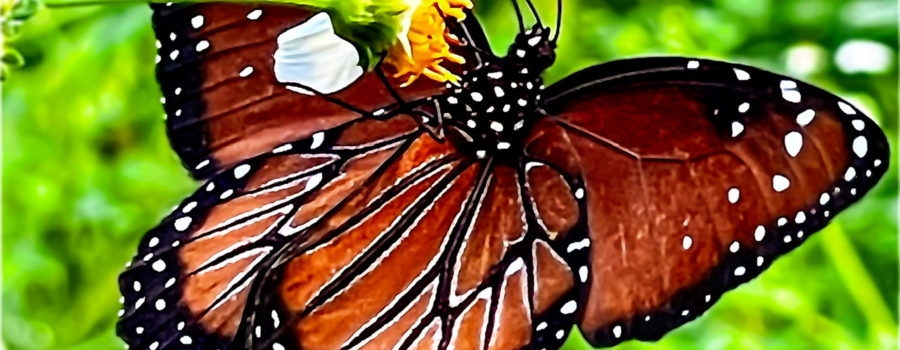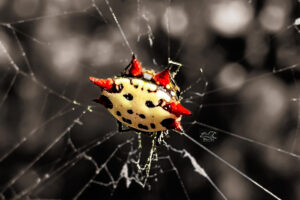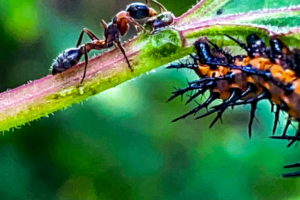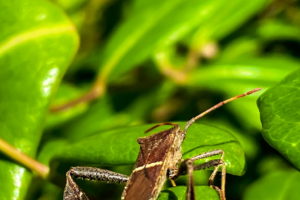Yet Another Beautiful, Colorful Brushfooted Butterfly

Fall in central Florida is butterfly season. In south Florida most of these butterflies are around all year, but around here we get just enough cold weather to give them a distinct season. Most of them overwinter as either caterpillars or pupae, so fall tends to be an active breeding season. The other thing that tends to make fall butterfly season is the blooming of the blackjack flowers. The blackjacks attract a lot of butterflies since they produce a lot of nectar (they also attract lots of other insects as well). Earlier this week, when I got home from work, I discovered a butterfly I hadn’t seen around here before enjoying the blackjacks. It looked a lot like a gulf fritillary or an American lady, but it was a darker orangish brown color and had slightly different markings. I followed it around through the blackjacks for about 45 minutes getting photos when I could. It was definitely hungry, but was kind of shy about the whole picture taking process. Once I did get some decent images, a little research showed that this new visitor was a queen butterfly (Danaus gilippus), a close relative to the others mentioned above and the famous Monarch butterfly.

Queens, also known as queen butterflies, or wanderers, can be found in the southern United States, Mexico, and quite a few of the Caribbean islands. It occasionally wanders further north into the midwestern United States, or further south as far as Argentina. It doesn’t generally make long migrations like it’s cousin the Monarch, but some of the more northern populations will migrate south for the winter. Their preferred habitat is sunny, open spaces with plenty of wildflowers, especially milkweeds and dogbane. These habitats can include clearings in the woods, woods edges, meadows, marshes, and deserts. It can also be a good garden butterfly if there are appropriate food flowers available. Although milkweed and dogbane are preferred by the larvae, adults will feed on a wide variety of wildflowers including asters, butterfly weed, and Crotalaria spp., among others.

Queens are so particular about what they feed on for a couple of reasons. Larvae ingest toxins from their food sources that help to make them unpalatable to predators, especially birds. Adult males also ingest certain chemicals that they use to produce pheromones that are important in attracting females. Males secrete these pheromones on organs known as hair-pencils that they rub on a female’s antennas. This seems to be a very important part of the mating ritual. Studies have shown that males without hair-pencils or that produce lower levels of pheromones have lower mating success than other males despite there being no differences in fertility. I am once again impressed with the complexity of the lifestyles (as well as the amazing beauty) of members of the insect world. Mother Nature is an incredible artist in more ways than one.






Recent Comments